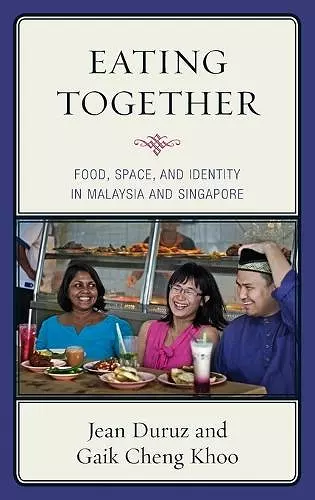Eating Together
Food, Space, and Identity in Malaysia and Singapore
Gaik Cheng Khoo author Jean Duruz author
Format:Hardback
Publisher:Rowman & Littlefield
Published:18th Dec '14
Currently unavailable, and unfortunately no date known when it will be back

Accepting the challenge of rethinking connections of food, space and identity within everyday spaces of “public” eating in Malaysia and Singapore, the authors enter street stalls, hawker centers, markets, cafes, restaurants, “food streets,” and “ethnic” neighborhoods to offer a broader picture of the meaning of eating in public places. The book creates a strong sense of the ways different people live, eat, work, and relax together, and traces negotiations and accommodations in these dynamics. The motif of rojak (Malay, meaning “mixture”), together with Ien Ang’s evocative “together-in-difference,” enables the analysis to move beyond the immediacy of street eating with its moments of exchange and remembering. Ultimately, the book traces the political tensions of “different” people living together, and the search for home and identity in a world on the move. Each of the chapters designates a different space for exploring these cultures of “mixedness” and their contradictions—whether these involve “old” and “new” forms of sociality, struggles over meanings of place, or frissons of pleasure and risk in eating “differently.” Simply put, Eating Together is about understanding complex forms of multiculturalism in Malaysia and Singapore through the mind, tongue, nose, and eyes.
Richly imagined and analyzed, the authors explore what public eating spaces can tell us about contemporary nostalgia, cosmopolitanism and localism. Eating Together takes us into the heart of the tastes, smells, sounds and sights of public commonality in Singapore and Malaysia. -- David Sutton, Southern Illinois University
Duruz and Khoo demonstrate brilliantly that employing the semiotics of food renders legible the unexpected everyday negotiations involved in accommodating the nuances of national policies governing citizenship in Malaysia and Singapore. Given their histories of migration, conquest and ethnic composition, anxieties in both nations give rise to attempts to curb potential irruptions of communal conflict by legislating every aspect of inter-ethnic relations but places where citizens congregate to eat also allow for ways to thwart such containment. The book astutely maps the ways in which the rich sedimentation of local culinary habits modifies commodified globalisation. -- Sneja Gunew, FRSC, Professor of English and Women’s and Gender Studies
This book is a testament to the possibility of bringing together rich sensuous writing with a sensible politics of eating-together-in-difference that avoids the dual traps of easy sentimentalism about palatal multiculturalism and cynicism about cross-cultural exchanges. That is a remarkable achievement which opens many sensory, ethical, and critical possibilities. -- Krishnendu Ray, Chair, Department of Nutrition, Food Studies & Public Health, New York University; President, Association for the Study of Food & Society
The book will be of interest to researchers in food, Southeast Asian and cultural studies. . . .A key strength of the volume is that, while clearly a work of combined case studies, it ultimately resists fragmentation because of the authors’ palpable, shared intellectual (and social) passion for their subject matter. The distinctly collaborative nature of Eating Together enhances the rojak motif that the authors pursue throughout the book. * Asian Studies Review *
- Winner of Gourmand World Cookbook Awards.
ISBN: 9781442227408
Dimensions: 238mm x 163mm x 26mm
Weight: 549g
278 pages